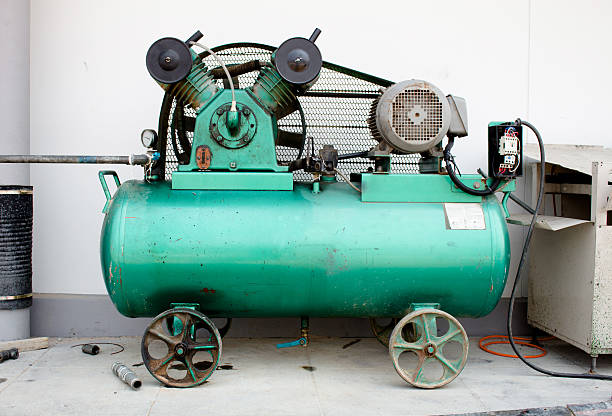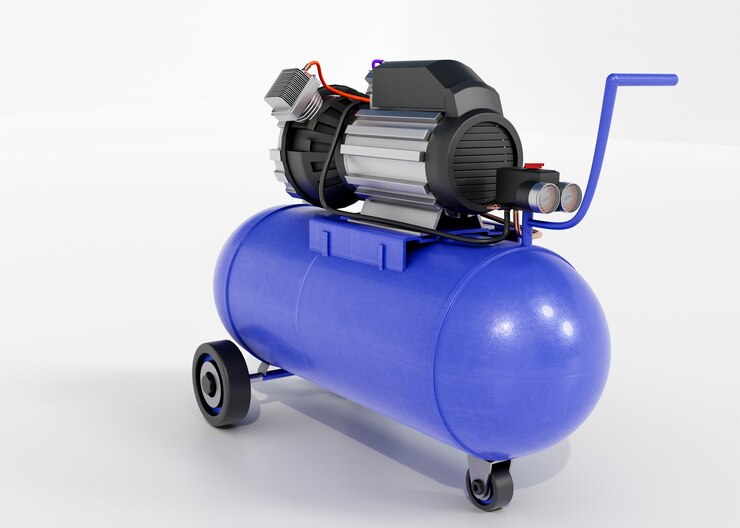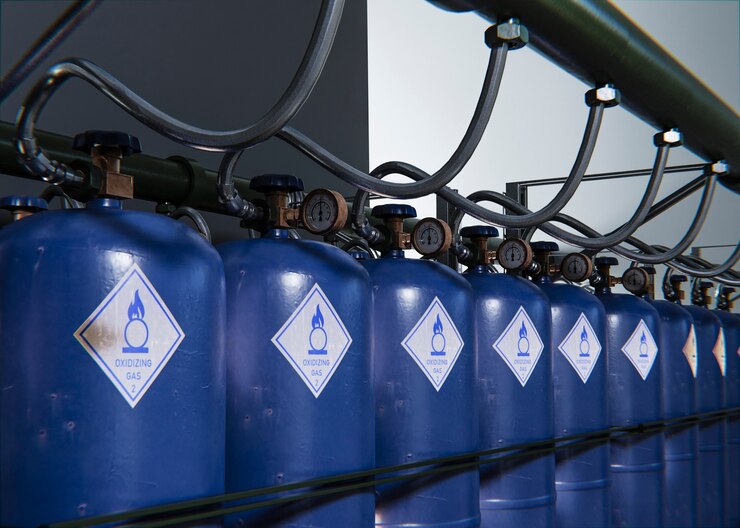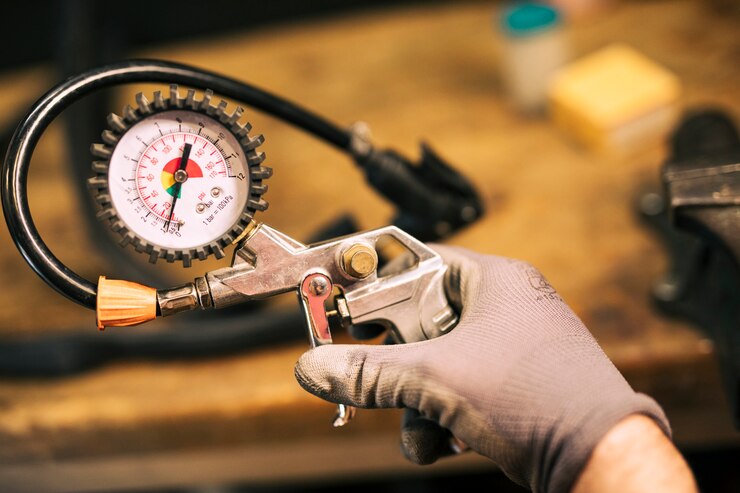The Ultimate Showdown: Reciprocating compressor and Centrifugal compressor
The Compressor Showdown: Reciprocating vs. Centrifugal Compressors
Compressed air is an essential component of many industrial operations. Dependable air compressors operate everything from chemical processes to pneumatic tool powering. However, reciprocating and centrifugal compressors are the two primary technologies to consider when selecting the ideal compressor for your requirements. This essay delves further into the world of reciprocating compressor and centrifugal compressor, examining their variations, uses, and benefits to assist you in selecting the best option for your particular needs.
Understanding the Titans: Reciprocating vs. Centrifugal Compressors
Reciprocating Compressors:
Envision a piston oscillating within a cylinder. That is a reciprocating compressor’s fundamental working theory. The cylinder fills with air as the piston retracts. The air is then compressed by the piston and released at high pressure through a discharge valve. Repeating this cycle results in a constant stream of compressed air being delivered.
- Centrifugal compressor:
Imagine a fast-moving fan enclosed in a housing. Essentially, a centrifugal compressor performs this function. An impeller that rotates accelerates air as it enters the compressor. As the air passes through a diffuser, the centrifugal force produced by the high speed propels it outward and raises its pressure.
The Battle Heats Up: Advantages of Each Compressor
Reciprocating Compressors:
- Versatility:
Reciprocating compressors are excellent in a variety of pressure applications, ranging from high-pressure industrial operations to low-pressure inflating activities.
- Durability:
These compressors are renowned for their sturdy design and extended life under normal maintenance.
- Scalability:
Reciprocating compressors come in a range of sizes and configurations, allowing them to be customized to match a given flow rate and pressure need.
- Maintenance Ease:
Although reciprocating compressors often need more regular maintenance, the processes are usually simple and easy to handle.
Centrifugal Compressors:
- High Efficiency:
Superior efficiency is provided by centrifugal compressors, especially at high flow rates, which results in notable energy cost reductions.
- Constant Flow:
Centrifugal provides a steady, smooth stream of compressed air, perfect for delicate applications, in contrast to reciprocating compressors that have pulsing flows.
- Silent Operation:
Because centrifugal compressors don’t have a piston mechanism, they run more silently than reciprocating compressors.
- Reduced Maintenance Requirements:
Compared to reciprocating compressors, centrifugal compressors often require less frequent maintenance.
Considerations for Selecting a Compressor
- Budget:
Centrifugal compressors can be more expensive initially than reciprocating compressors, which typically have lower initial costs. But take into account the long-term running costs as well as the need for maintenance and energy efficiency.
- Available Space:
For comparable capacity, centrifugal compressors sometimes have a greater footprint than reciprocating compressors.
- Noise Level:
Centrifugal compressors often run quieter than reciprocating versions if noise is a big concern.
- Maintenance Requirements:
Consider how simple and frequently each type of compressor requires maintenance.

- Brand Reputation:
Select a compressor manufacturer with a solid reputation for dependability, quality, and easily accessible after-sale assistance.
You may choose the reciprocating compressor and centrifugal compressor that best suits your unique application needs by carefully weighing these variables in addition to the knowledge presented in this article.
The Champion Awaits
There is no obvious winner in the conflict between reciprocating compressor and centrifugal compressor. Every technology has unique benefits that make it appropriate for a certain set of uses. Reciprocating compressors are excellent due to their high-pressure tolerance, robustness, and adaptability. The silent operation, constant flow, and excellent efficiency of centrifugal compressors make them stand out. Multi-stage centrifugal compressors increase the pressure capabilities of centrifugal technology, while oil-free reciprocating compressors offer clean air output for delicate applications.
You may choose the best compressor to dependable and efficiently power your industrial operations by being aware of the advantages and disadvantages of each kind as well as the key variables affecting your decision.
The Inner Workings of Champions: How Reciprocating and Centrifugal Compressors Function
We looked at the benefits and uses of centrifugal and reciprocating compressors in our last talk. Let’s now examine the working mechanics in more detail:
Reciprocating Compressor: Powerhouse of Positive Displacement
Consider a basic hand pump for a tire on a bicycle. That is a reciprocating compressor’s fundamental working theory. This is an explanation of how it works:
- Intake Stroke:
A crankshaft is driven by an electric motor or engine, which moves a piston within a cylinder. A one-way intake valve opens as the piston retracts, letting air into the cylinder.
- Compression Stroke:
As the piston advances, the inlet valve closes and the air inside the cylinder is trapped. The air is compressed into a smaller space while the piston continues to travel, increasing its pressure.
- Discharge Stroke:
When the air pressure reaches its maximum, a one-way discharge valve opens. After that, the discharge valve forces the pressurized air out of the cylinder and into the delivery line.
- Repeat Cycle:
The cycle continues, repeatedly sucking in, compressing, and releasing air while the piston retracts once again.
Centrifugal Compressor: Dynamic Force for High Flow
Imagine a pinwheel whirling quickly. An easy way to think about a centrifugal compressor is like that. This is how it operates:
- Air Intake:
An intake casing allows air to enter the compressor.
- Impeller Acceleration:
Incoming air is accelerated by a revolving impeller with blades that resemble a fan. The kinetic energy of air rises with increasing velocity.
- Pressure Conversion:
The diffuser, a stationary part, is passed through by the fast-moving air as it transforms its kinetic energy into pressure. By channelling the air, the diffuser slows it down and raises its pressure.
- Constant Flow:
Centrifugal compressors provide a steady, smooth stream of compressed air, in contrast to reciprocating compressors that have a pulsing flow.
- Multi-Stage Efficiency:
Compressed air leaves the first stage of a multi-stage centrifugal compressor and enters a second stage that has a different impeller and diffuser. The air pressure rises gradually with each step.
The decision between a centrifugal and reciprocating compressor is based on your unique requirements for features, flow rate, and required pressure. You can choose the best technology for your industrial applications by having a better grasp of these compressors’ internal mechanisms.
Conclusion:
Equipped with cutting-edge technological testing facilities and techniques, LEiYAO Compressors is a firm with vast expertise in both design and manufacture. Our company is committed to providing extensive technical support and services in addition to delivering high-quality equipment. Giving our clients more value is what we aim to do every time.



